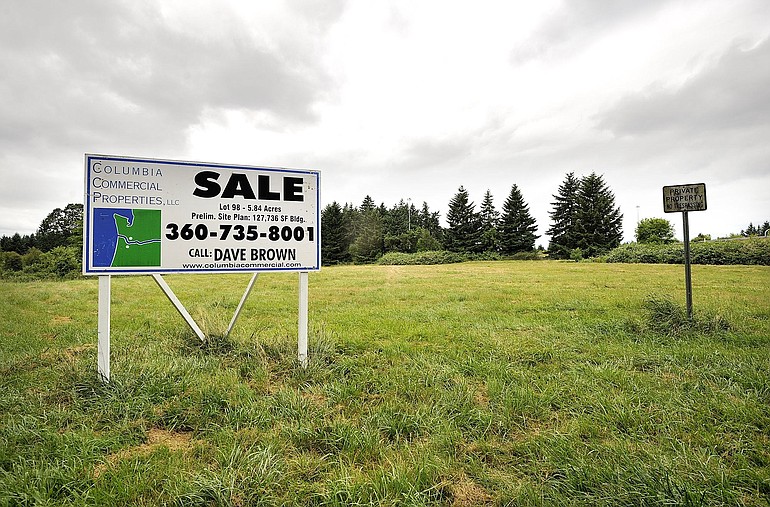An ordinance to protect fish and wildlife has prompted changes to a Vancouver business park’s 31-year-old development plan in order to leave the banks of Burnt Bridge Creek untouched.
The urban stream meanders some 12.6 miles through the city, from its agricultural origins near Northeast 162nd Avenue on Vancouver’s east side through golf courses and neighborhood greenbelts to its destination at Vancouver Lake.
If the Corporate Woods office park had developed as it was mapped out in 1980, its seven office buildings and nine apartment buildings would sit near the edge of the creek, which flows across the southwest quadrant of land at the intersection of Interstate 205 and state Highway 500. Newly submitted plans feature just three office buildings, and parking spaces for 575 vehicles and a wide swath of land in between the development and Burnt Bridge.
The updated plan would vacate the easternmost loop of Northeast 51st Circle, but with just about equal office space. Buildings in the new plan total 331,400 square feet in two four-story buildings and one five-story building, while the original plan called for 325,408 square feet of offices. But the original plan’s 110 apartment units are not included in the new plan.
It is unclear whether the site’s owner, Farmers Insurance Group, plans to develop the 29-acre tract it has owned since 1979, said Andrew Reule, an associate planner with Vancouver’s community development department. A “For Sale” sign is posted on the property.
However, Reule said the changes reflect a city ordinance adopted in 2005 to protect streams and wetlands.
“The critical areas ordinance requires setbacks from Burnt Bridge Creek,” Reule said.
That means creating a 100-foot to 175-foot-wide buffer between the stream and the development, unless the developer invests in mitigation projects to plant or restore stream habitat, Reule said.
Farmers, which is owned by California-based Prematic Service Corp., developed its regional headquarters building on an adjacent site at the corner of Highway 500 and Northeast 112th in the early 1980s. In the late 1990s, the company closed the office and sold the building to Washington state for its regional Department of Transportation and State Patrol offices.
Jay Davis, listed on city documents as the property owner’s project applicant, would not comment on the revised plans. But others say the revision illustrates a three-decade evolution of development standards aimed at protecting stream habitat.
“There was a recognition, by the 1990s, that rapid growth had happened and that we were losing a lot of our critical areas and the functions that those areas performed,” said Curt Hart, a spokesman for the state Department of Ecology, which helps cities craft their environmental ordinances to comply with the state’s Growth Management Act.
Hart said streams and wetland areas offer protection from floods by collecting excess storm runoff. They also provide critical habitat for endangered species, like salmon, and other animals and plants.
“Everything from songbirds to waterfowl to native mammals and amphibians,” he said.
But business advocates argue that the regulations can rob landowners of part of their land and take away the ability to profit from their investments.
“We’ve seen cases across the state where some local governments go too far with their critical area ordinances, without due regard to whether or not it takes away the landowners’ ability to use their land,” said Chris McCabe, government affairs director for the Association of Washington Business.
Reule said a provision in Vancouver’s ordinance allows developers to apply for an economic exception from the development standards.
He expects the city to decide by the end of July whether to accept revised plans for Corporate Woods.



